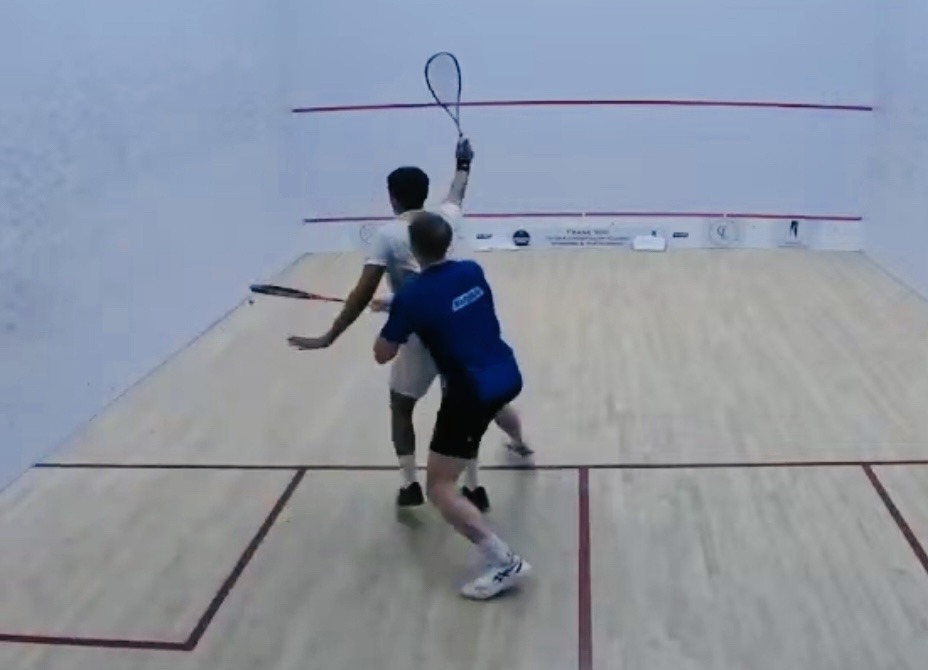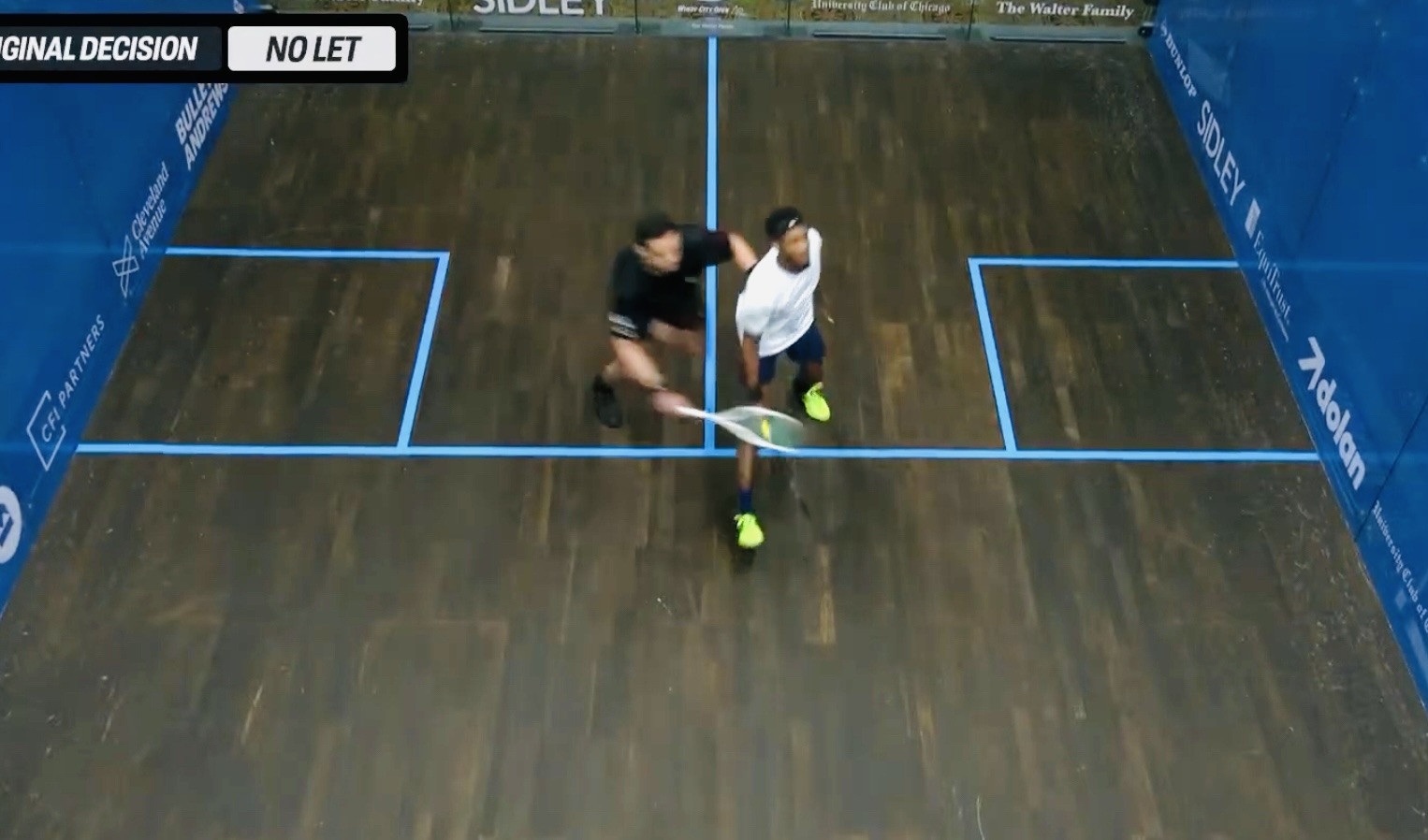Squash Interference: The Difference Between a Let and a Stroke
The rules surrounding interference play a crucial role in determining the outcome of a squash point. Two common decisions that arise when interference occurs are the “let” and the “stroke.” Whats the difference?
Let vs Stroke
In squash, the distinction between a “let” and a “stroke” often hinges on the player’s ability to reach the ball and their positioning concerning the opponent’s swing.
Let
A let is granted when there is interference, but the opponent is making every effort to avoid it, and the striker would have been able to make a good return.
This situation arises when the player can reach the ball, and despite interference, there’s a reasonable expectation that they would execute a successful shot.
Stroke
A stroke is awarded when the striker would have been able to make a good return, but the opponent is not making every effort to avoid interference.
Additionally, a stroke is given if there was interference, and the striker would have made a winning return.

In both cases, the interference has a significant impact on the striker’s ability to play a shot, and a stroke is awarded as a penalty to the opponent.
The critical difference lies in whether the player, despite interference, could reach the ball and execute a good return. If the opponent is making every effort to avoid interference and the striker could make a successful shot, it’s a let. However, if the interference hampers the striker’s ability to play a shot, and the opponent is not making every effort to avoid it, a stroke is awarded.
Let look at some specific inference scenarios that determine whether a play can be deemed a let or a stroke as per the WSF Squash Regulations.
Also read about Squash Court Specifications.
When No Interference, No Let:
If there’s neither interference nor a reasonable fear of injury, no let is granted. This emphasizes the importance of fair play and ensures that the game proceeds smoothly when players are unhindered.
The Unreachable Return:
In the presence of interference, if the player would not have been able to make a good return, no let is allowed. This rule prevents unnecessary interruptions and keeps the game focused on skillful and achievable plays.
Timing Matters:
If a player continues play beyond interference and then requests a let, the request is denied. This underscores the importance of immediate and appropriate responses to interference during a rally.
Minimal Interference:
In situations where interference exists but doesn’t prevent the striker from making a good return the term “minimal interference” comes into play. No let is allowed in these cases, emphasizing the resilience and adaptability required in the face of challenges.
Opponent’s Effort Matters:
When the striker would have been able to make a good return but the opponent fails to make every effort to avoid interference a stroke is awarded to the striker. This underscores the responsibility of players to actively avoid hindering their opponents.
Effortful Opponent, Yet Interference:
Conversely, a let is allowed when the opponent is making every effort to avoid interference, and the striker would have been able to make a good return. This acknowledges the sportsmanship exhibited by the opponent.
Winning Return:
If interference occurs, and the striker would have made a winning return, a stroke is awarded to the striker. This rule reinforces the idea that interference should not cost a player the opportunity for a decisive and skillful shot.
In conclusion, the distinction between a let vs stroke lies in factors such as the player’s ability to make a good return, the opponent’s efforts to avoid interference, and the potential outcome of the shot. These rules contribute to the fair and competitive spirit that defines the sport of squash.
Watch: How to warm up a squash ball
- Squash Match Analysis: Fares Dessouky vs. Marwan El Shorbagy – 2021 CIB Black Ball Open Final
- How covid changed Squash
- Let vs Stroke Squash
- Squash Court Dimensions (International)
- Is Squash an Elitist Sport
- can you play squash by yourself?
- How many calories do you burn playing squash
- Squash Aces Its Way to the Olympics: LA2028 to welcome a New Racket Sport
- How to deal with sweaty hands in Squash
- How to put grip on squash racket
- What are the best squash strings
- How to Improve Squash Fitness: Endurance and Interval Training
- Pink Squash Rackets
- Importance of the Lob in Squash
- The best squash grips
- The Best Shoes for Squash
- What do you wear to play squash?
- The Best Squash Racket for You
- How do you warm-up for a squash game?
- The best squash club in Lahore
- How to Split Step Squash
- What shoes can be used for Squash
- How do you practice squash solo?
- Racket bumper guard tape
- What Squash Balls do Professionals Use
- Squash Ball Types: Blue Dot and Red Dot
- Replacement Grips vs Overgrips
- How many squash balls are there?
- How to play the Corkscrew Lob in Squash
- What to keep in your Squash Bag
- What is a powerplay in squash
- What is the correct way to hold a squash racket?
- Can you use tennis string for squash?
- How to Improve Squash Footwork
- Is squash a winter sport?
- Is Squash Harder Than Tennis
- Does Smoking Affect Stamina: Cigarettes, Vaping, Shisha, Nicotine
- Where can I play squash in Toronto?
- Prescription Squash Glasses

